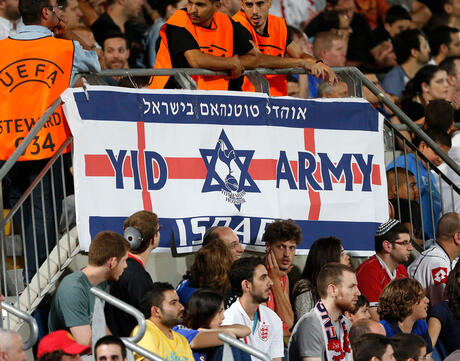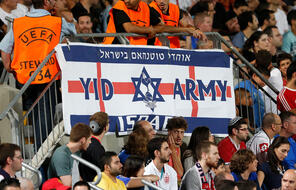
Recognising Antisemitism in British Football
Overview
About This Lesson
This lesson explores contemporary antisemitism in the context of football (soccer) in Britain. Enormously popular around the world, football can foster intercultural exchange and provide team members and fans with feelings of camaraderie and belonging. Strong ties of membership to a particular football club can also promote “we and they” thinking. Traditional rivalries and “banter” among opposing fans have sometimes served as a pretext for expressions of antisemitism, racism, and other forms of intolerance. However, the overt expression of intolerance is not the only issue. In The Changing Face of Football, the authors Back, Crabbe, and Solomos argue, “The possession of the appropriate ‘cultural passport’ is not merely reliant upon wearing a particular football shirt but on a conformity with the team’s cultural identity....These implicit forms of racialized exclusion are however disguised from the public’s gaze by their very normalcy.” 1
Using the familiar topic of sports, this lesson asks students to reflect on their own experiences as fans or members of a team and to consider what it means to participate in a team’s cultural identity. It also draws on news stories about antisemitism in football fan culture from a variety of viewpoints, providing students with the opportunity to analyze and better understand how sports and fan culture can simultaneously inspire feelings of pride, belonging, and inclusion as well as victimization, hurt, and exclusion.
- 1Les Back, Tim Crabbe, and John Solomos, The Changing Face of Football: Racism, Identity and Multiculture in the English Game (Oxford: Berg publishers, 2001), excerpt reproduced in “The Changing Face of Football: Racism, identity and multiculture in the English game”, The Guardian, December 17, 2001, accessed May 18, 2016.
Preparing to Teach
Lesson Plans
Activities
Extension Activities
Materials and Downloads
Recognising Antisemitism in British Football
The Refugee Crisis and Human Responsibility
Contemporary Antisemitism and Youth
Additional Resources
Unlimited Access to Learning. More Added Every Month.
Facing History & Ourselves is designed for educators who want to help students explore identity, think critically, grow emotionally, act ethically, and participate in civic life. It’s hard work, so we’ve developed some go-to professional learning opportunities to help you along the way.
Exploring ELA Text Selection with Julia Torres
On-Demand

Working for Justice, Equity and Civic Agency in Our Schools: A Conversation with Clint Smith
On-Demand

Centering Student Voices to Build Community and Agency
On-Demand

















